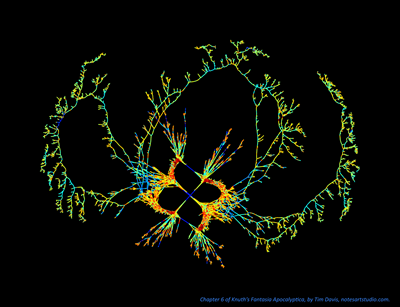
Timothy A. Davis is the recipient of the 2018 Sigma Xi Walston Chubb Award for Innovation. The award honors and promotes creativity in science and engineering. It carries a $4,000 honorarium and an invitation to give the Walston Chubb Award Lecture at Sigma Xi's Annual Meeting.
Davis, PhD, is a professor in the Computer Science and Engineering Department at Texas A&M University, and a Fellow of the Society for Industrial and Applied Mathematics (SIAM), Association for Computing Machinery (ACM), and IEEE. He serves as an associate editor for the SIAM Journal on Scientific Computing, the ACM Transactions on Mathematical Software, and the Journal of Parallel and Distributed Computing.
He is a world leader in the creation of innovative algorithms and widely-used software for solving large sparse matrix problems that arise in a vast range of real-world technological and social applications. For example, MATLAB uses his solvers for x=A\b. Every photo in Google Street View is placed into proper position using his software via Google's Ceres solver. Over half a billion people on the planet have his software preinstalled on their smartphones.
His software appears in all major Linux distributions, and is widely used in open-source packages such as GIMP, R, Octave, and FEniCS. The Xyce circuit simulation package by Sandia National Lab, and Berkeley's OpenSees earthquake simulator both rely on his sparse solvers.
In 2015, Davis’ solvers helped the FBI rescue six young girls in Colorado from sex trafficking. The DARPA project that analyzes online ads on the dark web relies on his solvers.
Davis’ recent SuiteSparse:GraphBLAS package allows software developers to easily solve complex graph problems such as countering cybercrime, combating human trafficking, and exploring pathological microbiomes, by using the elegant language of linear algebra.
Davis is applying his research to create new algorithms that rely on graphics processing units (GPUs) to accelerate the solution to sparse linear systems.
His publications include a book on sparse direct methods (SIAM, 2006), and many published articles and peer-reviewed algorithms. Over the past 15 years, his algorithms represented seven percent of the entire algorithmic publications of the ACM Transactions on Mathematical Software.
In the artistic realm, Davis creates algorithmic artwork that translates music into visual art via Fourier transforms, graph algorithms, and force-directed graph visualization. He created the theme artwork for the 2013 London Electronic Arts Festival that appeared on billboards all over London. His most recent artistic work is a rendition of Donald Knuth’s Fantasia Apocalyptica, shown below.

By creating novel applied mathematical algorithms and publishing them as extremely reliable software, Davis' work enables many developers to solve their problems with ease, whether creating maps of Mars, designing a VLSI circuit, scanning the earth under Japan for fault lines, finding their way on Google StreetView, or rescuing young girls from human trafficking.
For more details see his A&M page and his algorithmic art at NotesArtStudio.com.